Alex Bryant's Blog
November 30, 2020
The Pagan Origins of Cyber Monday

Yes! It’s that time of year we all look forward to – Cyber Monday. Overshadowed by its senior partner, Black Friday, it’s all too easy to overlook Cyber Monday as just another cynical corporate attempt to make us to spend money. But in fact, Cyber Monday has fascinating ancient origins that will make you treasure this time of the year even more.
Since time immemorial, Internet-based retailers have stood up on Cyber Monday and showered us in fine deals on products such as streaming subscriptions and wireless headphones. Who doesn’t have fond childhood memories of waking up early on Cyber Monday and rushing to our laptops to see what great savings we can make on SD memory cards?
The origin of this tradition is, of course, the USA. It was first signed into the legislation by Washington, although some version of Cyber Monday since earlier arrivals of colonists. In fact, the first Cyber Monday is thought to have been celebrated some time around 1692. Early Puritan settlers arrived in America, only to discover that all their USB cables were data-transfer only, leaving them with no way to charge their phones over the long, cruel winter. (Remember, this was a long time before the rapid-charge functionality of USB-C).
These settlers were saved by a passing band of Native American traders, who offered them cables and charging ports, even sharing America’s WiFi password so that these settlers could at last send selfies to their anxious relatives back at home. This meeting quickly fell into companionable silence as everyone stared at their screens solidly for the next six hours, catching up with their WhatsApp messages. And today, families across the world celebrate this story by doing the exact same thing around the dinner table as they scan the Internet for fab discounts.

However, this widely accepted version of events fails to acknowledge the far more ancient origins of Cyber Monday. There are striking similarities between the traditions of Cyber Monday and much earlier pagan festivities that make it likely that the modern incarnation of Cyber Monday was simply piggybacking on the cultural heritage of those American settlers.
The Venerable Bede refers to “that wickede heathen festival of Sebel Moon Day, still abroade in the land” as early as 946AD, and it’s clear that he believes this to be a pre-Christian tradition. A “Sebel” or, in its modern spelling, “Sable” Moon was simply an ancient term for a new moon. But what marked out one particular new moon from any other in the pagan calendar? Historian Gavin Menzies argues that the Sable Moon celebrated in this day was no literal moon at all, but a period of the year when everyone’s phone battery finally died. In British prehistory, settlements would have survived off limited agriculture, supplemented by hunting and gathering, and it could often be many weeks between opportunities to charge phones.
Of course, these Celtic tribes still used Nokia 3310s, so this length of time was often quite manageable. But “Sable Moon Day”, falling as the nights drew in and the Winter Solstice beckoned, likely marked the point in the year that the phones would finally die, until they could be charged anew in Spring. While a dark and gloomy time for all, it would be a time when those with phone battery would generously share their remaining screentime with those whose phones were already dead.
As Sable Moon Day mutated into Cyber Monday, and calendars became more rigid, we naturally assigned the festivities to fall consistently on a Monday. But the core of the holiday has remained the same: generosity through the medium of phones, first practised from one tribesperson to another, and now more commonly seen in the truly unmissable offers made available to us by online retailers.
Which version of the Cyber Monday myth is correct? We may never know for sure. But in a way, the magic of Cyber Monday is in the not knowing. Cyber Monday is a living, breathing tradition, which we have every right to shape and remake for our own age.
November 23, 2020
IAN Book Award 2020 - Children’s/Juvenile/Teen/YA Winners
The winners of the Independent Author Network (IAN) Book of the Year Award 2020 have been announced!
We'd like to share with you some of the winning books in the Children’s / Juvenile / Young Adult / Teen categories, including two outstanding books: Dear Jane and Grace's Ghost.
If you're looking for a great Christmas gift for your children this year, look no further!
Check out some of the winners below:
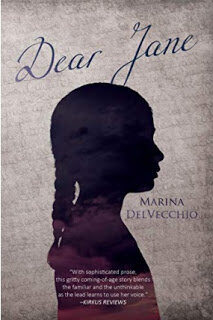
Dear Jane by Marina DelVecchio
Kit Kat was born in Athens, Greece. Her mother was a prostitute, and their protector was a pimp. After an early childhood marked by violence, homelessness, and time in an orphanage, a Greek-American woman adopted her and moved her to New York. Kit Kat was eight years old, with a new name, a new country, and a new mother who tried to silence her memories and experiences. She sought refuge in books, and after a failed suicide attempt at the age of thirteen, she discovered Charlotte Brontë’s Jane Eyre. This book saved her life, and at fifteen, Kit Kat begins to write letters to Jane Eyre as a means of surviving a childhood she still remembers, the family she left behind, and the new mother that refuses to acknowledge her past.
Kit Kat’s letters to Jane Eyre demonstrate the resilience and power that she derives from Jane's own dark narrative and the parallels between their lives that include being neglected, unloved, poor, orphaned, and almost destroyed by the madwoman in their lives. This coming of age and semi-autobiographical novel is about family, loss, forgiveness, and the power of a good book.
“With sophisticated prose, this gritty coming-of-age story blends the familiar and the unthinkable as the lead learns to use her voice.” –KIRKUS REVIEWS
LINK: https://www.amazon.com/dp/1684331722
FOLLOW THE AUTHOR: https://marinadelvecchio.com/
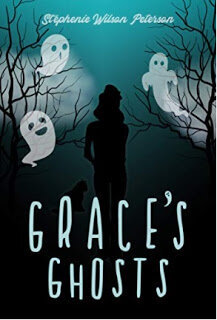
Grace's Ghost by Stephenie Wilson Petersen
Grace has friends. They just lack heartbeats.
It's a good thing Grace isn't afraid of ghosts. Her town is overridden with them. Her cat, Midnight, is a ghost. All of her friends are ghosts, and she's the only person who can see them. Her bullies, however, are as alive as can be.
When her ghostly friends ask for her help, Grace has to break a curse, uncover a magical mystery, and avoid a mean girl, all while dark forces stand in her way at every turn. Can Grace help her friends before it's too late?
LINK: https://www.amazon.com/dp/1734386622
FOLLOW THE AUTHOR: http://stepheniepeterson.com/
IAN Book of the Year 2020 - Finalists
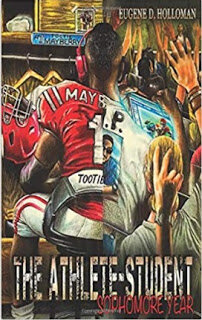
The Athlete-Student: Sophomore Year by Eugene Holloman
After a rocky freshman year that included outstanding production on the field, unsatisfactory performances in the classroom, an unforgettable breakup and a suspension from the biggest game in school history - Michael “Tootie” Mayberry is ready to demonstrate growth and maturity in his upcoming college sophomore year. However, while Tootie aims to improve upon a stellar season that made him a freshman All-American. He first has to rebuild a reputation that took massive blows stemming from a cheating scandal that landed him on academic probation. With his future of becoming a professional athlete hanging in the balance, how will Tootie respond to the increasing demands of being a student-athlete?
LINK: https://www.amazon.com/dp/0578614952
FOLLOW THE AUTHOR: https://www.theathletestudent.com/
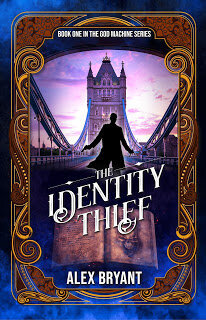
The Identity Thief by Alex Bryant
A shapeshifting sorcerer called Cuttlefish unleashes a terrifying wave of magical carnage across London. A strange family known as the River People move into Cassandra Drake's neighbourhood. Are the two events connected?
Who is Cuttlefish, you may ask? He’s nobody, yet he’s everybody, and trying to figure out who he is and where he’ll strike next is–you guessed it–addicting.
It’s a game of figure out what Cuttlefish wants and why–and how this nobody will do anything to achieve becoming somebody, through pretending to be everyone.
But he’s not the only one struggling with identity. Cassandra ‘Cass’ Drake, our 12-year-old protagonist and accidental hero, is an endearingly witty girl stuck between wanting to be accepted by her popular friends and doing the right thing–which everyone who’s ever been a kid knows can be pretty difficult.
Cass’s internal dialogue will make you laugh out loud and charm you (but not magically). Her thoughts and actions will be flawed (hello, 12-year-old!), but she is smart and finding her way that her mother would definitely be proud.
Cleverly told between narration from Cass’s POV, article clippings, and 3rd person POV of Cuttlefish, you’ll find yourself enchanted in the way two threads of story become one mastermind of a story.
"If I could give Alex Bryant’s debut novel, The Identity Thief, the first in The God Machine series, a single identity, it would be: Addictive.
Addictive like you want to stay up late reading. Addictive like you wake up early so you can squeeze in 10 minutes of reading before heading out the door. Addictive like you contemplate skipping lunch to read. Addictive like you’re reading while half-walking, half-running on the treadmill. Addictive like…I think you get the point." - WANDERING EDUCATORS
LINK: https://www.amazon.com/dp/1913571009
FOLLOW THE AUTHOR: https://www.alexbryantauthor.com/the-author
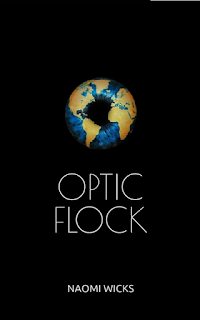
Optic Flock by Naomi Wicks
Linnea Hansen is a young goat herder from the mountainside town of Orbelle. For years she has complied with the compulsory law of wearing contact lenses that monitor human behaviour. Never expecting to find love, or a life beyond her goats and blind mother, Linnea accepts her solitary life. However, one night she climbs the mountain to witness a meteor shower, only to return and find Orbelle evacuated and an unknown soldier who opposes the lenses. This young man will attempt to help her reunite with her mother, whilst changing her outlook on life forever.
"Amazing book! I couldn't put it down. There were so many twists and turns, it kept me guessing. The characters are relatable and the story line completely gripping. 10 out of 10 from me! Can't wait to read more."
LINK: https://www.amazon.com/dp/179741075X
FOLLOW THE AUTHOR: https://www.naomiwicksart.com/about
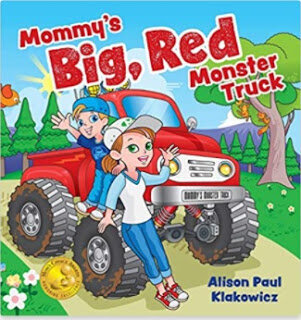
Mommy's Big, Red Monster Truck by Alison Paul Klakowicz
Every kid knows that mommies are the greatest. They feed us and take care of us and love us with all their hearts. But did you know they are also so cool! One little boy sure does. His mommy drives a big, red monster truck, and it's awesome! It bounces and smashes and takes them on amazing adventures all over the country. In her truck, they can do anything and go anywhere, and best of all ... they do it together!...
"Lively, vigorous, and well suited to kids who adore cool moms and their vehicles." - Kirkus Review
LINK: https://www.amazon.com/dp/152553018
FOLLOW THE AUTHOR: https://www.alisonpaulklakowicz.com/
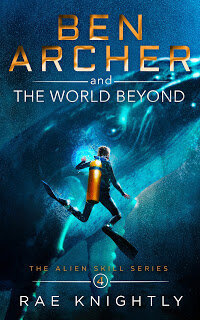
Ben Archer and the World Beyond (The Alien Skill Series, Book 5) by Rae Knightly
A MESSAGE FROM THE WORLD BEYOND.
Thirteen-year-old Ben Archer has accepted a mind-boggling challenge: to use his alien skill to restore the balance between humans and the rest of the living world. But after a near brush with death in the middle of the Pacific Ocean, things only get worse when his power attracts the attention of Jeremy Michaels, a reporter from the Provincial Times.
At first, slipping away to a small coastal town for a summer camp seems like a good idea, but Ben's hopes of a discreet vacation come to an abrupt end when an unprecedented event rocks the town, leaving him with a nail-biting dilemma.
Will he reveal himself or not?
The Alien Skill Series is a bestselling, award-winning science-fiction adventure story for fans of A Wrinkle in Time, Lost in Space, The Neverending Story and Percy Jackson. The young-at-heart will revel in this family-friendly, action-packed series filled with alien superpowers, engaging characters and thought-provoking insights into the way we treat our world.
"An extremely timely message for today's readers. Ben Archer and the World Beyond sings with hope and beats with adventure." (Amazon reviewers)
LINK: https://www.amazon.com/dp/1989605044
FOLLOW THE AUTHOR: https://www.raeknightly.com/ (get a FREE novella)
Check out the full list of IAN Book of the Year Award 2020 winners here:
https://www.independentauthornetwork.com/2020-botya-winners.html
March 3, 2020
The five stages of a same-sex relationship in fiction
This was commissioned by Female First - original article here . If you’re thinking to yourself, “What on Earth qualifies Alex to write about LGBT relationships in a women’s magazine?” then I’d suggest keeping your unwanted opinions to yourself.
Same-sex relationships in mainstream fiction have taken place largely off-screen, hidden between the pages of somebody else’s story. It’s only in recent years that they’ve been allowed to emerge into the light, even taking centre stage. This journey is happening at different speeds in different genres, but it always seems to go through the same five steps. It’s probably not a coincidence that it’s roughly the same five steps that same-sex relationship visibility goes through in real life too…
Peeking Out of the ClosetOne step up from total invisibility, you’ll find same-sex relationships planted with breathtaking subtlety into the background of someone else’s story. Disney arrived at this stage with Oaken’s husband, glimpsed for mere frames over a video feed during Frozen. It’s not much, but it’s the tiniest possible nod at acceptance; the opening of a door that inevitably leads to greater things. Though we’re still waiting with bated breath for Elsa herself to come out as gay.
Schrödinger’s CoupleAlso known as queerbaiting. A pair of same-sex characters are implied to be romantically entangled subtly enough that any LGBTQ person will pick up on the clues, but complete deniability can be maintained. The relationship between the two is left completely open to the viewer’s imagination. It’s both alive and dead, depending on the informational status of the viewer. Magic? No, it’s just the mind-bending consequences of queerntum physics.
Marvel are rumoured to have twice cut scenes from films that would have made a character’s queerness explicit (Captain Marvel and Valkyrie), instead leaving those characters’ queercoded behaviour to speak for itself.
Gay Best FriendNeed I say more? The most iconic LGBTQ archetype, the Gay Best Friend is there for the hero to share their romantic woes with; to provide the easy banter and comic relief. Much like their sister character, the Fat Best Friend, the GBF used to be desexualised so that they could support the hero’s romantic endeavours without being a sexual rival. Everyone’s favourite GPF is surely Damien from Mean Girls, though the examples are endless.
GBFs used to be limited to expressing their own sexuality through a constant stream of innuendo, to make up for their total lack of action. But now that we’ve reached an era that will tolerate the occasional same-sex kiss, the GBF will sometimes be allowed their own romantic happy ending. Or even their own string of happy endings, dotted throughout the story.
Romeo and JulianAt last, same-sex relationships are allowed to take centre stage. Alas, these romances are almost always doomed to fail. Now, the tragic star-crossed lover story is of course the oldest romance in the book, and same-sex couples deserve to have this story told as well. But it’s especially common in same-sex romances at the moment, perhaps because you don’t need the warring Montagues and Capulets to provide a motive for the relationship to unravel. The intolerance of society is more than enough.
Sadly, I’ve just written a novel that falls directly into this category. In The Identity Thief, the hero Cass discovers that her mum has started secretly dating the mum of the weirdest kid at school. She proceeds to emotionally torture the weird kid until he snaps, causing everyone to turn against him, and the relationship to collapse under the strain. It’s not quite the same dynamic as the usual doomed romance, but it’s hardly Queertopia yet. Speaking of which…
QueertopiaMuch sci-fi and fantasy takes place in a society so far advanced or removed from our own that same-sex relationships, along with a wide variety of other sexuality and gender orientations, are common and unremarkable. Everyone’s just kind of getting along, and living their best life however they please. Iain M. Banks’s Culture series is one of the most celebrated examples, set in a distant future where technology has made the idea of fixed gender or sexuality obsolete.
But we’re also seeing this in more down-to-earth fiction too. Netflix’s Sex Education features a panoply of characters and relationships that don’t fit the hetero norm. Naturally enough, all these characters are wrestling with problems of their own, but these problems have for the most part progressed beyond the simple intolerance of other characters. It’s an optimistic vision for a world that is increasingly looking more like fact than fiction.
June 19, 2019
Villains with Impact
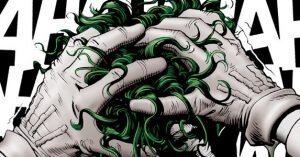
Villains. Let’s face it, while your hero can be inspiring and empathetic, it’s a well-written villain that always steals the show. Some are flawed but redeemable, while others are pure evil. But whatever the case, every good villain manages to hypnotize their audience through sheer force of personality.
But what actually is a villain? And how can we write one that can shoulder the weight of the plot, steal the reader’s heart, and incite their fury, all at the same time?
We often use the word ‘antagonist’ interchangeably with ‘villain.’ But technically, this isn’t quite right. ‘Antagonist’ literally means the character opposed to the main direction of the plot, in contrast to the ‘protagonist,’ who is pushing the plot forward. But in fact, the villains of virtually every action, crime, or mystery story are the ones driving the plot forward. Take James Bond as an example – each film’s plot is driven forward by the villain working towards their evil ends, while Bond himself does everything he can to stop them.
So if the villain isn’t always the antagonist, who are they? And why do they find themselves in this nefarious position? I’d suggest that the answer lies not in what the villain does, but in the principles they embody. No matter what kind of villain we’re dealing with, they’ll always be fundamentally opposed to the hero when it comes to some kind of principle that’s central to the plot.
This will often, but not always, be a moral principle: the villain is self-serving and unafraid to hurt others to get their way, while the hero always acts for the greater good. But this isn’t always the case. Take Javert from Les Misérables: a fiercely moral policeman who’s just trying to bring the hero, escaped criminal Jean Valjean, to justice.
A clash between the hero and villain’s principles will, of course, lead to a clash in their actions, which drives the plot forward. In any story, the hero and villain will find themselves, again and again, standing in each other’s way, with ever-escalating stakes, until one of them eventually triumphs. But the clash in actions, the external conflict which is easiest to spot when thinking about the plot, is only half the story. There’s also the internal conflict between the principles themselves taking place. We see this internal conflict taking place in the hero’s own mind; they wrestle with their own ideology as they try to come to terms with the villain’s.
One of my favourite story theories, Dramatica, suggests that we should stop thinking about villains altogether, and start thinking about ‘impact characters.’ The impact character may or may not be a villain, but they’ll always be a character who presents the hero with a fundamentally different principle. The ideological clash between the hero and the impact character will cause the conflict which drives the novel. Sometimes, the hero will learn from the impact character and adapt their own principles; sometimes, they’ll hold firm and reject the impact character’s philosophy completely. Either way, this journey of discovery generates both the hero’s internal development and the external plot progression that gives any story its drive and meaning.
The original Star Wars trilogy provides one of the most brutally obvious depictions of this relationship between hero and villain, and the journey the hero goes on. Luke Skywalker and Darth Vader are similar in countless ways, growing up in obscurity, before being discovered to harness the great potential and taken under Obi-Wan Kenobi’s wing. Both are headstrong and ideological, determined to change the world. Not to mention that Darth Vader is (spoiler alert) Luke’s father. The one crucial way in which they differ is that Darth Vader chooses the Dark Side of the Force, while Luke (eventually) chooses the Light. Luke’s journey towards making this choice in the face of countless temptations from the impact character, Darth Vader, to follow in his footsteps, are what drive the character development of the trilogy, while the countless violent clashes between the Empire and Rebels provide the external plot development.
Thinking about an impact character instead of a villain helped me understand my own villain and his relationship to my hero in The Identity Thief. From the beginning, I knew that my hero and villain would have more similarities than differences. I wanted to create a hero that behaved mostly villainously, and a villain with strong principles who you couldn’t help but sympathise with. My hero, Cass, is a clever but manipulative Year 8 (that’s ages 12-13 for everyone outside the UK!) student who’s not afraid to use every dirty trick in the book to keep her head above the murky social waters of her school. The villain, Cuttlefish, is a grandstanding sorcerer who changes his appearance to manipulate others to their doom. But while Cass ruthlessly hurts others only to shore up her own social standing, Cuttlefish is working towards a loftier, if slightly insane, goal.
However, as the story is told through Cass’s eyes, she manages to pull the wool over the readers’ eyes too. Most readers don’t notice Cass’s treacherous ways until they’re pointed out by…you guessed it, Cuttlefish. It takes a villain – an impact character – to hold up a mirror to the hero and show them the principles guiding their every action, for better or for worse.
So as you’re developing your villain, think: How does my villain impact the hero? How will they shake my hero’s principles to their core? Will, my hero, learn and adapt to the villain’s principles, or will they hold firm to their own? If you answer those questions well, you’ll have created a villain with a true impact.



